Winter Wonderland
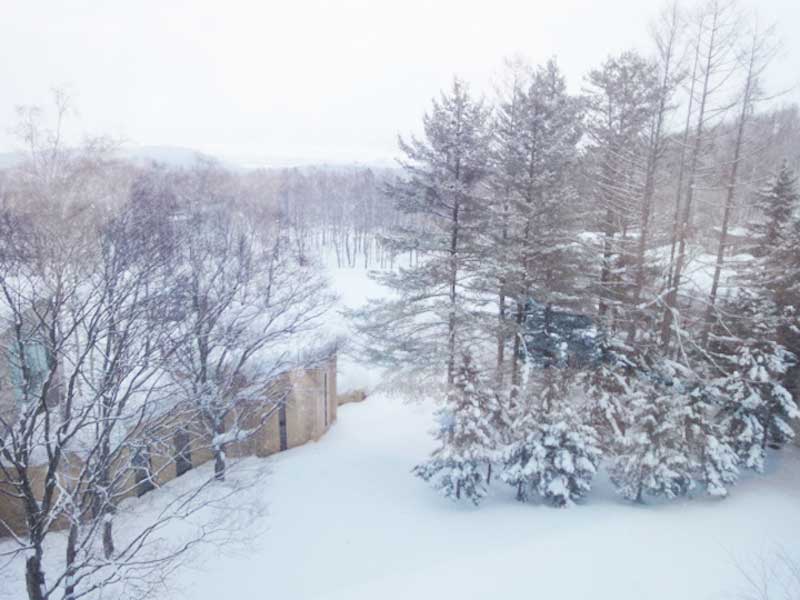
ICE, ICE BABY: The view of the slopes from the Furano Prince Hotel.
There is snow, and there is fine snow.
I thought this was just local hype when a Sapporo native asked me, weeks before I was to leave for Japan, what the heck I wanted to do in her home prefecture of Hokkaido, where it was 20 degrees below zero, where 18 inches of snow could fall in one day, and where she used to be saddled with shoveling snow outside the house during five months of winter.
Twenty degrees below, and 18 inches of snow? That was exactly what I wanted to experience, I told her: I had seen the postcards of houses nearly buried up to their roofs in snow. For someone from the tropics, the scenery was utterly captivating.
Oh well then, she said, probably wondering about the sanity of foreign devils, but happy that I seemed genuinely interested in her hometown. Now she bragged about it: Hokkaido, she said, has the finest snow – in Japan and possibly in the world.
And she wasn’t exaggerating. It was no longer 20 degrees below when I finally arrived in Hokkaido in February, but nine degrees below was still cold enough to produce mountains of snow – and it was as powdery and clean as the shaved ice for bingsu.
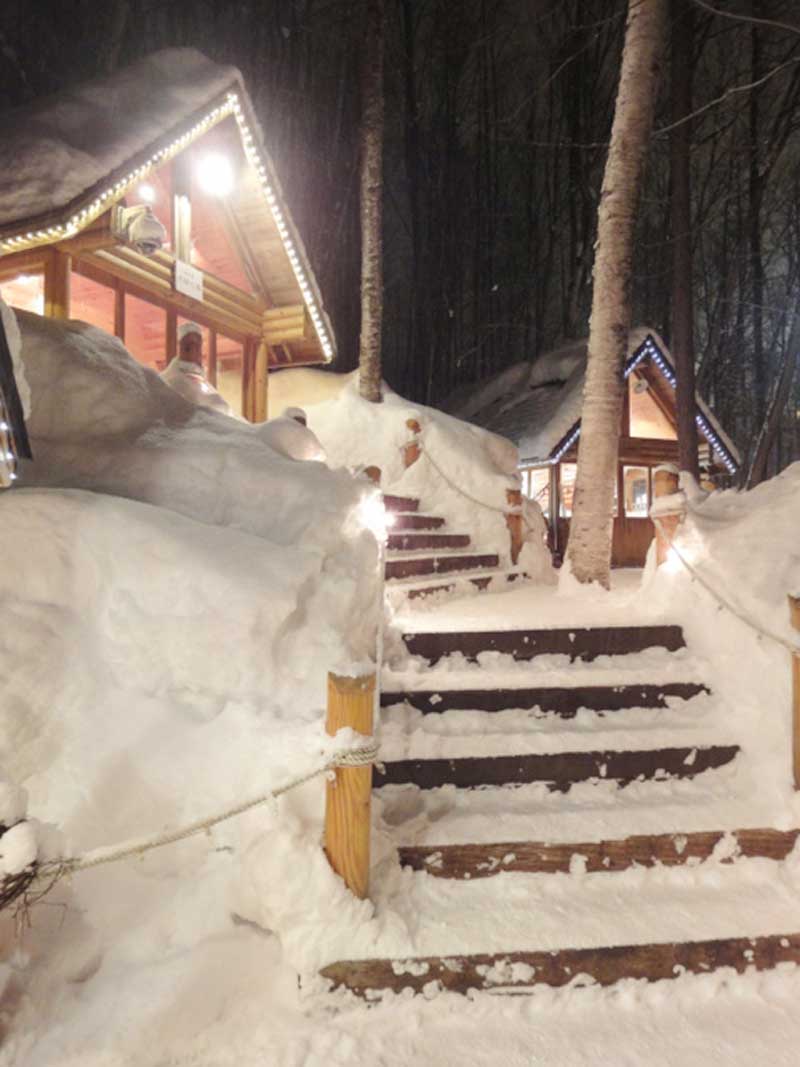
Traditional Japanese arts and crafts are featured in the Ningle Terrace.
It was also freezing enough to maintain the Kan Kan Mura snow dome café, ice sculptures and ice activity area in the ski resort valley of Furano from Dec. 23 last year to March 11.
The ice café is a short walk from the traditional Japanese arts and crafts village called Ningle Terrace. The wooden houses that lined the winding, sloping village paths, including a coffee shop, were buried in snow and looked exactly like the images I had seen in postcards of Hokkaido.
My ears and nose felt like they had dropped off in the cold and there was heavy snowfall on the night that I walked around, but it was thoroughly enchanting. By the time I walked backed to the Furano Prince Hotel, which was packed with skiers from all over the world, my black winter coat was white from the snow and I feared that my hands would be frozen for the rest of the night. But it had been a wonderful trek.
I was ready for a dip in the nearby hot spring, where there are separate sections for men and women, but chickened out when I saw that all the women and girls of all ages were completely naked.
As in other volcanic areas, Hokkaido has many natural hot springs, which are perfect for banishing the freezing cold after skiing, snowboarding or sledding in the slopes around Furano. In spring when the snow has melted, the vast expanses of snow give way to breathtaking fields of fragrant lavender, with tracts of golden yellow sunflowers and melons providing a striking contrast.
Culinary lavender is infused in Hokkaido candy, made into tea, and sprinkled on sweet treats including cheesecake.
Land of milk, cheese and Wagyu
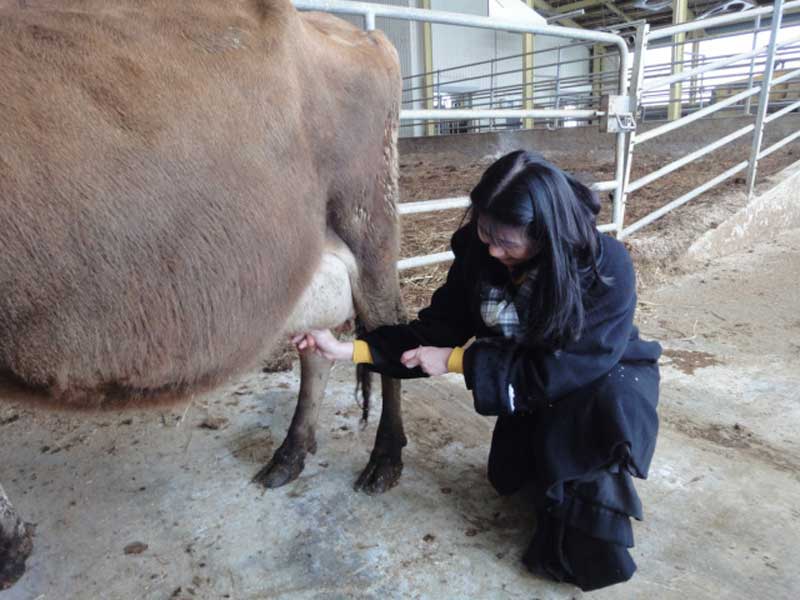
At last, I fulfi lled my dream of milking a cow – quite easy once you get the hang of tugging on the teat. To make sure the cow doesn’t kick you, feed her during the milking. Chiyoda farm in Biei uses corn.
These days Hokkaido, the largest of Japan’s 47 prefectures, is gaining renown for other products. The island has wide grazing areas for cattle. Hokkaido is the second largest producer of Wagyu beef in Japan. Another big product is milk.
The cold weather in northern Japan is ideal for dairy logistics, ensuring product freshness and an environment in which dairy cattle thrive. During winter, the farm-to-table route can be done in outdoor temperatures colder than any mechanical freezer is capable of providing, which helps to keep the milk fresh.
From May to October, Hokkaido’s 550,000 hectares of farmland become lush not only with lavender but also with high-protein, high-sugar, high-carbohydrate grass, unique to cold climates and ideal for cattle grazing.
Families typically own the farms, with each property ranging from 50 to 100 hectares. Hokkaido government officials told me that as of 2016, over 6,300 households owned a total of 779,400 cows, with 470,000 of them dairy cattle that produced 3.9 million tons of raw milk.
The prefecture produces 53 percent of Japan’s milk requirements and 90 percent of the natural cheese. Because of the high quality, Hokkaido milk as well as dairy products from the prefecture are slightly more expensive. But the extra cost is worth it.
Jersey in Japan
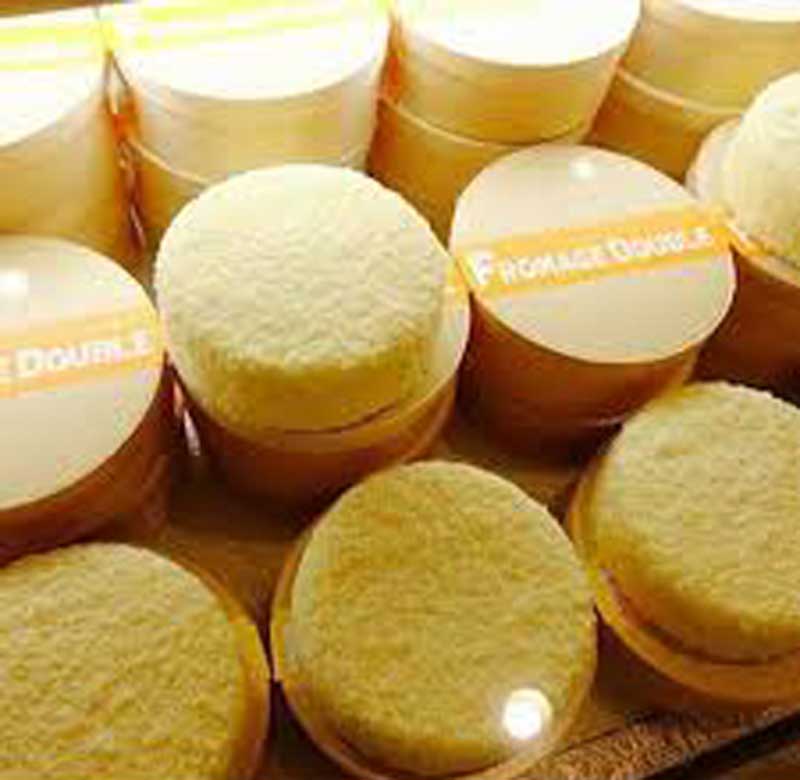
Hokkaido’s famous product LeTao cheesecake
Among the largest farms is the 60-year-old, 200-hectare Chiyoda farm in Biei, which is owned by Avarzed Agvaandorj, a Mongolian who moved to Hokkaido about three decades ago. Like most farms in Japan, Chiyoda is highly mechanized, employing only 28 people. Two persons are enough to milk 40 Jersey cows, which produce about 550 liters of milk daily. Business is so good that on Dec. 1 last year, Agvaandorj bought a 300-hectare farm nearby.
Agvaandorj says Jersey cow milk has 1.5 percent higher fat content than milk from the black-and-white Holstein-Friesian. The farm has 100 Jersey cows, 250 Holsteins for dairy and 2,800 for Wagyu beef.
To ensure the quality of the milk and meat, all the cows in Chiyoda are artificially inseminated. There is a steady demand for fresh milk in the capital Sapporo alone from restaurants, Agvaandorj told me. The rest of the milk is processed into cream, butter, yogurt, longlife milk, ice cream and high-quality cheese.
Seventh heaven of cheesecake
From those products, Hokkaido is now gaining renown for its delectable cheesecakes.
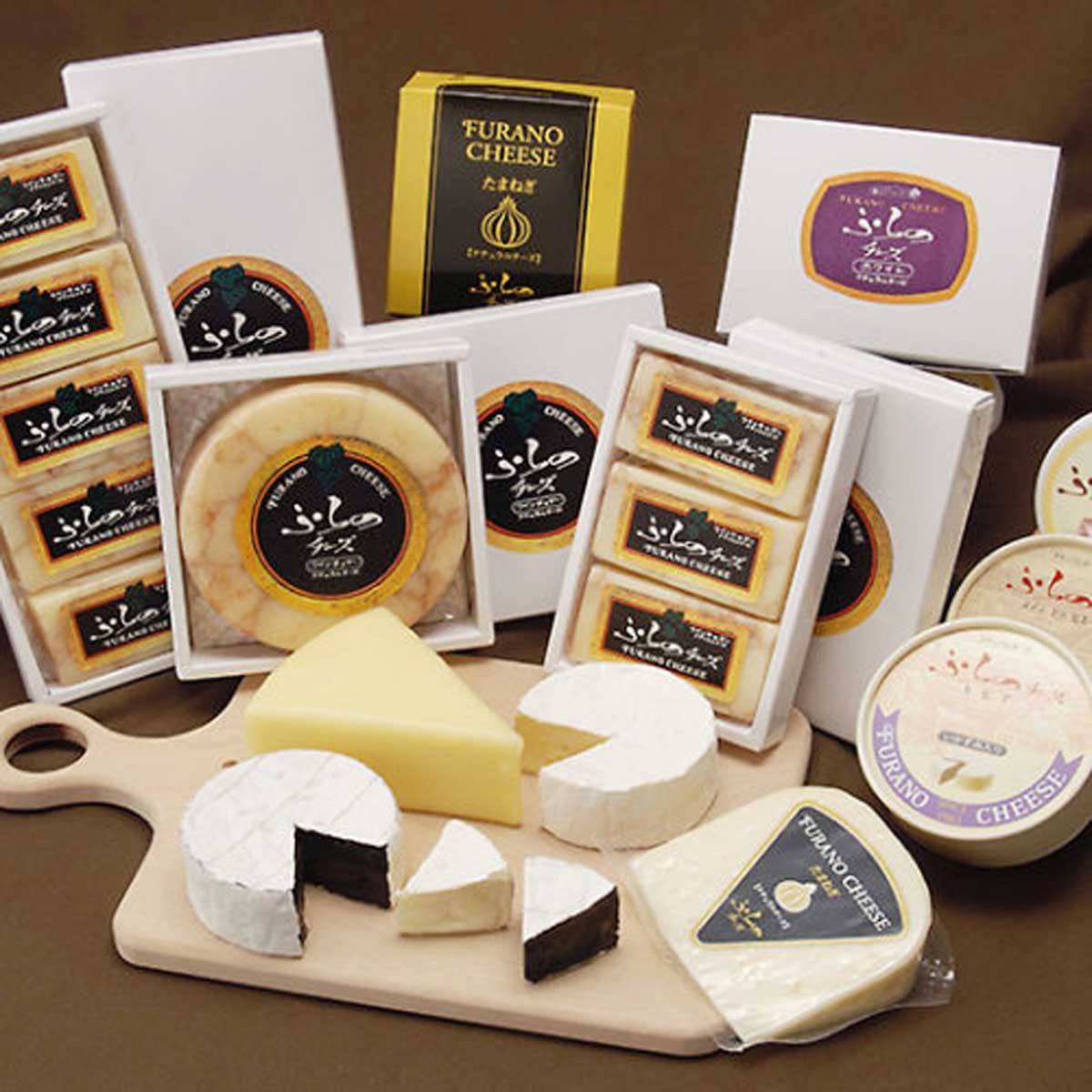
Camembert and squid ink cheese from Furano
Last year I thought I was in cheesecake heaven when I tasted the fresh-baked cheese tart of Bake in Yokohama, with the warm cheese bursting like chocolate lava as I bit into it.
But the fresh cheesecake of LeTao in Hokkaido’s lovely Otaru city is the seventh heaven of cheesecake. It melts in the mouth, and pairs perfectly with coffee on a freezing day. Once known for its sake distilleries, glassworks and music boxes, Otaru now has local and foreign tourists snapping up the pricey cheesecakes.
When I visited on a Friday, the LeTao store and café in Otaru was packed with tourists. The store’s manager, Li Ming Yamabuki, told me that the shop sells about 10,000 double cream cheesecakes five inches in diameter every day, and up to 15,000 during peak seasons such as Christmas. This type of cheesecake, which costs about P800 each excluding tax, can last six months frozen. Last year, the annual revenue of the listed company was a whopping 9 billion yen – about P4.5 billion – and this year it is expected to grow to 12 billion yen.
LeTao cheesecake is now exported to Hong Kong, Indonesia, South Korea and Thailand. It has two outlets in Taipei, and is considering opening one in Manila. Yamabuki, who came to Japan from Mongolia 20 years ago, said the company has 400 regular employees in Hokkaido alone.
Its premium “raw” or fresh cheesecake, with a shelf life of only a few days even in cold storage, costs about P215 per slice.
What makes LeTao cheesecake a standout? The company has shared its cheesecake recipe, which includes mascarpone from Italy and Australia. But the secret, unmatched ingredient is the cream that is churned especially for the company by a local dairy farm that guarantees 42 percent milk fat content.
Confectioner Seigo Kawagoe began selling Western sweet treats 22 years ago in Tottori prefecture. Later, he built a store at a strategic intersection in Otaru’s tourist center, which was designed like a bell tower. He called it LeTao, from the first letters of “La Tour Amitie Otaru” – French for The Friendship Tower of Otaru – where he sold cheesecake and pastries, chocolate and ice cream.
Somehow the Arctic freeze made eating ice cream more enjoyable for me. Not only did I eat ice cream in Hokkaido, I made it, too, including the sugar cone where I placed the treat at the Furano Cheese Factory.
After a hands-on instruction on making ice cream or butter, visitors can enjoy pizza that uses any of the five types of cheeses made in the factory: plain white, onion cheese, squid ink cheese, red wine cheddar and camembert. Chef Mr. Maeda bakes the pizza at 540 degrees in an oakwood-fired brick oven imported from Naples, where he studied pizza-making for three months. The pizza uses vegetables sourced around Furano, following the principle of “local produce, local consumption” – one of the secrets of Hokkaido’s fine foods, according to the cheese factory’s Kobayashi Hiroyuki.
And chocolate, too
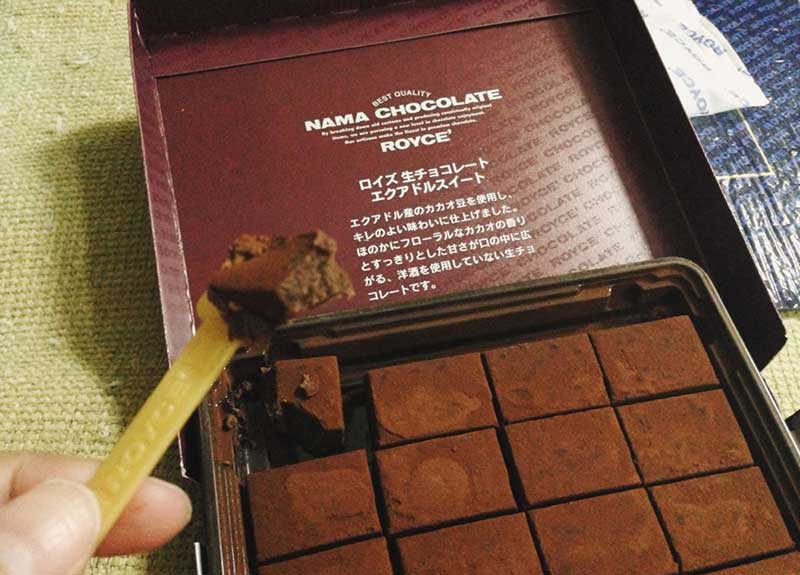
Royce’s Nama chocolate.
Where there’s premium milk, there’s also premium confectionery.
Hokkaido is home to Royce fine chocolates and cookies. Founded in Sapporo in 1983 by Yasuhiro Yamazaki, Royce is known to Filipinos for its addictive crispy potato chips enrobed in chocolate, baton cookies and its signature silky Nama (Japanese for raw or fresh), with high moisture content that comes only from using fresh cream churned from Hokkaido milk.
Premium chocolate contains a high percentage of cocoa butter, which makes the chocolate melt at 28 to 32 degrees Celsius. Royce chocolate must be kept in a cold pack at 10 degrees Celsius for air travel, although those I kept in my check-in luggage survived the return flight to the Philippines.
The double fromage LeTao cheesecake, kept in a wooden tub, also survived my return to Tokyo and then to Manila.
What I couldn’t bring home was the fresh cheesecake. Made of cheese processed from Hokkaido’s fresh milk, LeTao’s fresh cheesecake does not travel well, and is best enjoyed right at the shop.
This heavenly cheesecake is just one of the many reasons for you to visit Hokkaido.
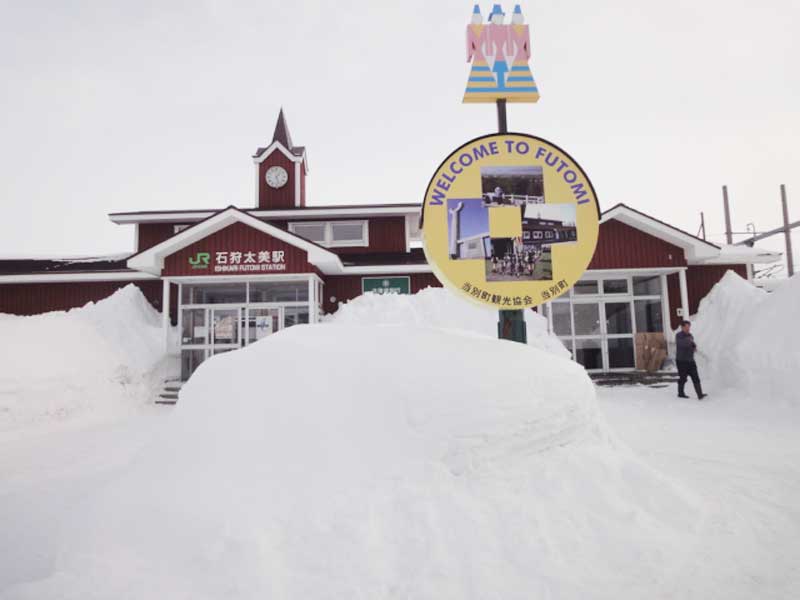
The train station in Futomi, where the Royce chocolate factory is located.



















